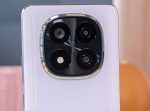Matthew DeBord/Insider
- Cadillac loaned me a $112,000 Escalade Platinum ESV, the all-new version of the brand’s full-size luxury SUV.
- The new Escalade has been hotly anticipated, as Lincoln’s revamped Navigator captivated customers when it came to market a few years back.
- My four-wheel-drive Escalade came with a 6.2-liter, 420-horsepower V8 engine under the hood and a new suspension for the rear wheels.
- But the real showstopper is a 38-inch, three-screen instrument-cluster-and-infotainment system.
- My first-drive impression is that Cadillac has done what it needed to do with its flagship, even as the brand takes the electric lead for General Motors.
- Visit Business Insider’s homepage for more stories.
Cadillac has been on its heels for a few years.
The 2018 launch of a completely redesigned Lincoln Navigator was a smash for Cadillac’s rival in the luxury full-size SUV market. At one point, Lincoln was struggling to meet dealer demand, the reviews were rapturous, and it was clear that Cadillac needed to up its game with the hotly anticipated Escalade, which hadn’t been revamped since 2015.
The moment has arrived, and Cadillac has rolled out the all-new, fifth-generation Escalade. It remains large and in charge, a great hulking hunk of a machine, but the new Navigator represented a significant rethink of the overall user experience, so the big question around the new Caddy wasn’t whether it would be good at what it always has been but rather, “Would it be good at charting a path to a future very different from the world of 1999, when the Escalade first hit the streets?”
More of the same, but with new twists
Matthew DeBord/Insider
The bottom line is that the new Escalade is indeed more of the same — immense of scale, mighty of power, indifferent to the judgment of anyone who has ever hugged or even appreciated a tree — but it’s also a clear indication of where Cadillac wants to be over the next decade.
With the Escalade, as with the Navigator, conversion to fandom relies on an extended test drive. I’ve sampled the Escalade in various guises over the years, but with the launch of the new SUV during COVID times, Caddy flipped me the keys to a staggeringly well-appointed $112,340 Escalade ESV Platinum with two thumb drives plugged into the USB ports and gave me a few days to drive around while listening to Caddy folks talk about the vehicle. (The Escalade started at $105,995, and the base price is about $76,000.)
Matthew DeBord/Insider
This worked out very well, as I tooled through the New Jersey suburbs listening to Caddy’s best and brightest explain various features. The showstopper is a 38-inch, curved OLED display, consisting of three groupings: a small screen to the left of the instrument cluster, the cluster itself, and the infotainment screen in the center of the dashboard.
The visual effect is dramatic, and the resolution is stunning. But how does it work?
Normally, I leave infotainment bells and whistles to last when it comes to reviews, and that’s because there’s been a convergence around standards in the industry. Some systems outperform others, but only marginally, and much of what makes a system great or merely good boils down to the interface.
Three screens good
Matthew DeBord/Insider
The Escalade’s setup stands apart because of how comprehensive and integrated it is. Parent General Motors has already outfitted its entire lineup of vehicles with industry-leading infotainment and 4G LTE wifi connectivity, as well as the OnStar suite of services. So what you got on the old Escalade was already better than most of the competition, with the exception of Audi and its MMI “Virtual Cockpit” system.
With the trio of screens in the new Escalade, Cadillac has made excellent use of the SUV’s internal dimensions to give owners something remarkable. Of particular interest is the augmented-reality navigation feature, which uses front cameras to generate a view of the path ahead of the vehicle, overlaid with directions that adjust as the system closes in on, say, a left turn.
Matthew DeBord/Insider
It’s cool, and it works like a charm. Admittedly, if you have this feature running, with regular GPS navigation churning away on the central touchscreen and the rear-view mirror in optional camera mode, you’re processing a lot of screens.
But I didn’t find the “max” configuration too distracting, although I did eventually flip the rear-view back to normal mirror mode.
Otherwise, the system builds on excellence. Bluetooth device pairing is a breeze, there are multiple USB ports, wireless charging, and in my tester, a 36-speaker AKG Studio Reference audio system that sounds gorgeous and is actually standard for this upmarket trim level. Backing up the touchscreen interface is a rotary controller and buttons rig between the seats.
The costliest tech extra is night vision, a $2,000 add-on, and one that I wasn’t able to savor in the short time I had the Escalade. But I’ve tested it on other Caddys, and it’s a market leader, with its main competition coming from BMW.
Cadillac is now an infotainment and connectivity leader
Matthew DeBord/Insider
Screens are the new Escalade’s marquee feature, and that illuminates an interesting development for luxury automakers. Four big brands have made infotainment tech a selling point: Tesla, with the large central touchscreen in the Model S sedan and Model X SUV; Mercedes, with a dash-filling, cluster-infotainment layout similar to Cadillac’s; Audi, with its aforementioned MMI/Virtual Cockpit setup; and now Caddy.
It’s a commitment to add such as ambitious configuration — Acura, Lexus, BMW, and others haven’t taken the plunge — and the sprawling interior dimension of the Escalade’s cabin make in an ideal platform. But does it do that much more than a less dramatic system?
Not really. On the other hand, it’s not a staggeringly expensive thing to add: all luxury vehicles have infotainment screens, the Cadillac now simply has, if you’ll forgive me, the Cadillac of screens.
Matthew DeBord/Insider
As far as the exterior design goes, the Escalade has been updated but not reinvented. Remember, we’re essentially talking about a giant box here, so we’re not going to be threatening smaller, lovelier SUVs, such as the Jaguar F-PACE, the Maserati Levante, the Alfa Romeo Stelvio, or the Range Rover Velar.
That said, the tweaks are meaningful, although they’re concentrated on the fascia, with a reworked headlight and running-light presentation. The Escalade has always offered a slab-like face to the world, with a huge-y big, Mondrian-ish interpretation of the classic shield badge (the wreath was sadly retired years ago) hovering amid a titanic grille.
Matthew DeBord/Insider
The lights mitigate the massiveness about as well as possible, lending some elegance to the look.
Once you get past the front-end, of course, the Escalade in profile is all about wheels, and those wheels must be large for the SUV to come off as properly bling-y. My tester sported 22-inch, 10-spoke alloy specials that were included in the Platinum trim package.
And as any student of Escalade-ology knows, one could go bigger. Personally, I’d go with 24s, to better fill the wheel arches.
Fantastic on the inside
Matthew DeBord/Insider
My Black Raven tester came with a Jet Black interior, but the black-on-black aspect was leavened by some elegant texturing and snazzy white piping for the seats (heated and cooled up front).
The cabin was both capacious and sumptuously appointed, with beautiful wood trim framing the dash and scattered throughout the insides.
Matthew DeBord/Insider
The twin second row was a pair of captains chairs, providing easy pass-through access to the quite roomy third row. This makes for a 2+2+3 seating configuration, but a three-person bench is available on lower trim levels for the second row.
My Escalade also featured a second-row entertainment system, with a pair of screens, but in the limited time I had with the vehicle, I was able to make just a quick run-through of the feature, supported by a pair of wireless headphones.
Matthew DeBord/Insider
The upshot is an SUV that can easily transport seven or eight adults in comfort and style.
This what a proper full-size SUV such as the Escalade (as well as its siblings, the Chevy Suburban and GMC Tahoe) brings to the party: a no-compromise hauler. Smaller three-row SUVs and crossovers invariably have space in the final row for only kids and pint-size adults, and their cargo capacity is often so compromised by the third-row that you end up dropping one of the seats to accommodate the luggage or gear that the people actually being transported by the SUV require.
Matthew DeBord/Insider
Cargo capacity for the 2021 Escalade is, as expected, magnificent. It starts at a generous 26 cubic feet, but my tester was the extended-wheelbase ESV, so I got 42 cubic feet. Drop all the seats and you’re looking at 143 cubic feet — the cargo hold effectively becomes a covered pickup truck.
Controls in the cargo bay enable users to raise and lower the seats, and my test Caddy has a powered liftgate with a rear window that could be opened on is own.
A very large engine for a very large SUV
Matthew DeBord/Insider
The motivation for the 2021 Cadillac Escalade is provided by a 6.2-liter V8 engine, making 420 horsepower with 420 pound-feet of torque. The power is sent to the wheels via a 10-speed automatic transmission.
A diesel option will also be available — a six-cylinder mill, making 277 horsepower and 460 pound-feet of torque.
Matthew DeBord/Insider
The shifter is an annoying joystick that takes some practice to get the hang of, but that doesn’t take up a lot of real estate on the center console.
Cadillac’s hang-free highway semi-self-driving system, Super Cruise, will be offered on the new Escalade, but my test truck didn’t come with the feature. However, I did have a host of driver-assist technologies, ranging from emergency braking to lane-keep-assist to adaptive cruise control.
Matthew DeBord/Insider
The all-new Escalade is most impressive for what it intended to be most impressive at: wowing passengers with its vast, luxurious, high-tech interior.
Otherwise, it’s easier to handle the previous-generation SUV, thanks to a new independent rear suspension that both creates additional interior space and gives the big ol’ truck a more car-like demeanor from behind the wheel.
Obviously, you get V8 power and beefy road presence with this monster of a vehicle, but with each iteration, the Escalade seems to get easier to drive, smoother on the road, and tidier around corners — a more premium execution, one that suits a luxe mega-SUV.
There’s some irony in this, as Cadillac is now supposed to GM’s lead electric brand. Electrification should eventually come to the Escalade — given the low fuel economy of 6,000-pound beasts such as this, a welcome development — but for now, we can wallow in the Caddy’s defiant old-school-ness.
Escalade fans should rejoice
Matthew DeBord/Insider
The use case for Very Large SUVs is to move families, friends, gear, and pets. Sure, you could do this in the new Suburban for substantially less coin, but for your $112,000 and change, the Escalade certainly does not disappoint.
The technology approach is different from the Navigator’s — the Lincoln goes for unobtrusive infotainment and a mellower vibe. But the massive 38-inch setup is consistent with the Caddy’s go-big-or-go-home mojo. The Escalade might have followed the Navigator to market back in the day, but it’s always been a showier ride, and the fifth-generation extends that legacy.
No Escalade fans should be disappointed by the new SUV, and I suspect that by the time the big guy hits the road in force next year, the Navigator could find that it’s in for some extremely intense competition.
Matthew DeBord/Insider
Matthew DeBord/Insider
Matthew DeBord/Insider
Matthew DeBord/Insider
Matthew DeBord/Insider
Matthew DeBord/Insider
Matthew DeBord/Insider
Matthew DeBord/Insider
Matthew DeBord/Insider
Matthew DeBord/Insider
Matthew DeBord/Insider
Matthew DeBord/Insider
Matthew DeBord/Insider
Powered by WPeMatico





